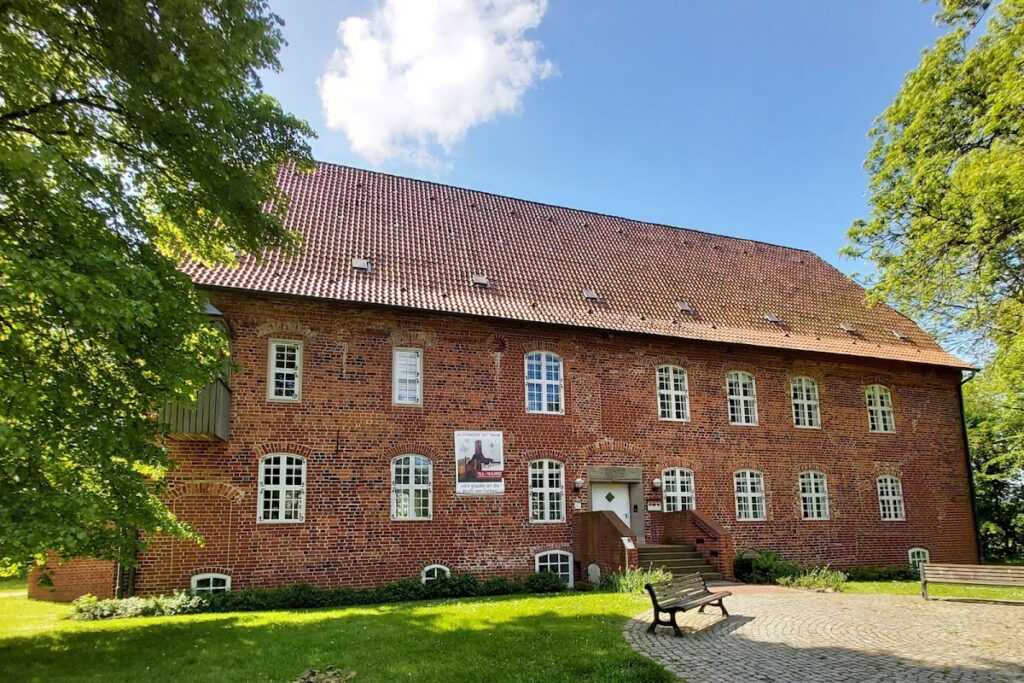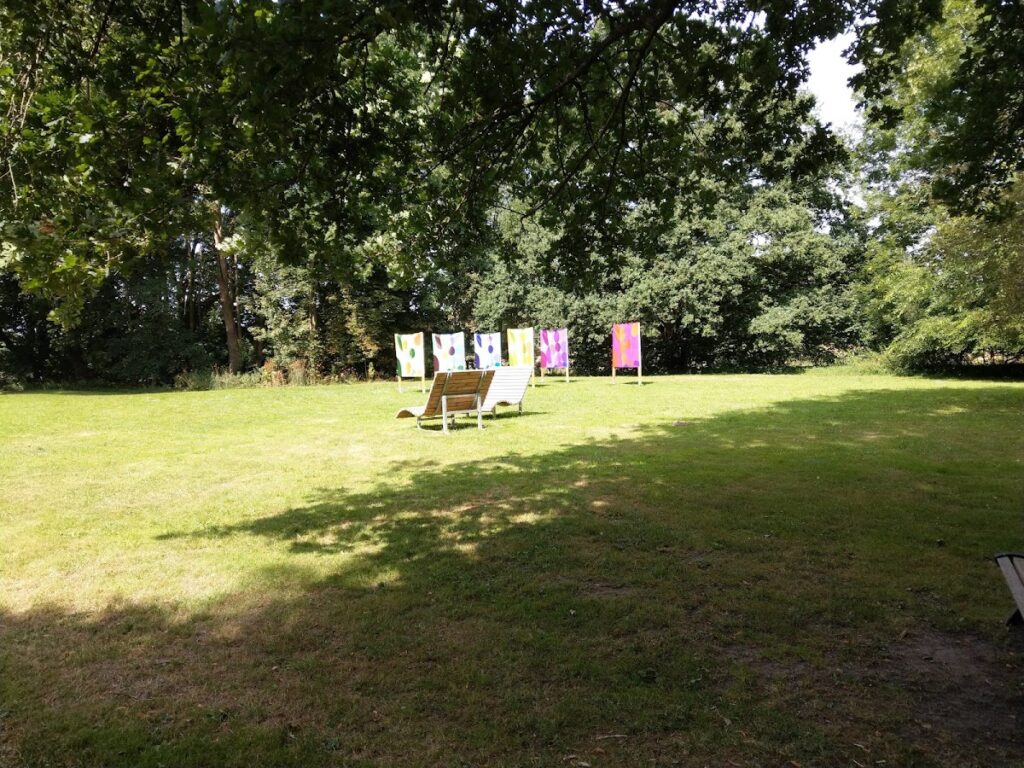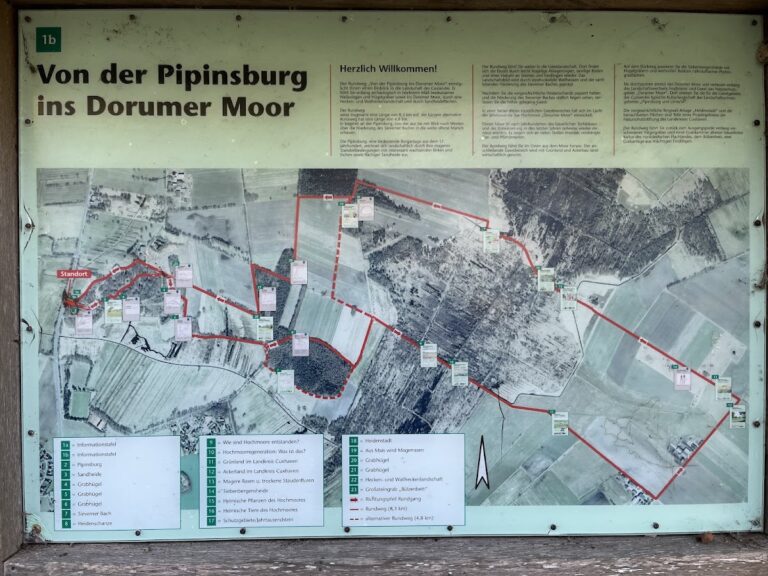Burg zu Hagen Castle: A Medieval Fortress in Hagen im Bremischen, Germany
Visitor Information
Google Rating: 4.5
Popularity: Low
Google Maps: View on Google Maps
Country: Germany
Civilization: Unclassified
Remains: Military
History
Burg zu Hagen Castle is located in the municipality of Hagen im Bremischen, Germany. It was established by the Archbishops of Bremen during the medieval period as a stronghold to maintain control over the surrounding region.
The fortress first appears in historical records in the 12th century, initially known as “Castrum Hagen” to distinguish it from the nearby village called Dorfhagen, later simply Hagen. It is widely believed that Archbishop Hartwig II, who served from 1184 to 1207, ordered its construction. Its primary purpose was to suppress the rebellious Stedinger peasants, a farming community resisting ecclesiastical authority. The castle’s situation on the border of the Geest, a sandy, elevated landscape, in the valley of the Drepte River allowed defenders to use controlled flooding as a natural defense.
In 1212, the fortress endured a siege by peasants from Osterstadt, one of the Stedinger communities, although whether the attackers succeeded in capturing it remains unclear. Following the suppression of Stedinger uprisings in the 1230s, the castle increased in importance as a center for regional administration. Archbishop Gerhard II expanded its influence in 1248 by acquiring the nearby Bramstedt district and rights over it, establishing the basis of the Amt Hagen—a territorial and administrative unit governed from the castle.
Throughout the 14th and 15th centuries, the castle’s role evolved amid political shifts. In 1389 it was pledged to the Counts of Oldenburg, reflecting the complex feudal relationships of the time. Various archbishops and administrators used it as a residence. It faced military pressure during the Schmalkaldic War (1546–1547), a conflict connected to religious and political turmoil in the Holy Roman Empire, and was also contested during the Münster Feud the following year.
In the early 1500s, Archbishop Johann Rode commissioned the construction of the main building seen today, a two-story brick structure finished by 1507, which he used as his residence. Notably, in 1575, Archbishop Heinrich von Sachsen-Lauenburg, one of the first Protestant bishops to marry following the Reformation, held his marriage ceremony at the castle, generating considerable controversy.
The castle’s strategic value drew the attention of foreign powers in the 17th century. Swedish troops occupied it during the Thirty Years’ War, a widespread European conflict. Queen Christina of Sweden gifted the castle in 1647 to a Swedish governor (Amtmann), who administered the area. This arrangement ended in 1680 when the Swedish crown revoked the grant, after which the property was sold to the Kingdom of Hanover in 1720.
Under Hanoverian control, the fortress served multiple official purposes, including as a court, prison, and administrative residence. By this time, the main administrative offices had moved to a newly built Amtshaus in 1698. Court personnel occupied the castle until 1978. After the region became part of Prussia in 1866, the castle remained in official use but was closed to public access. Between 1985 and 1988, the building underwent restoration funded by the state and local authorities. Since 1990, it has functioned as a cultural center hosting exhibitions.
Remains
Burg zu Hagen Castle today is recognized for its rectangular two-story main building constructed of brick between roughly 1502 and 1507, built on top of earlier foundations. The structure measures about 30 meters long and 10 meters wide, with robust cellar walls reaching 1.6 meters thick at the base, slightly tapering higher up. The building’s steep, tiled roof adds to its unmistakable historic character. The north side features the main entrance, enhanced in the 17th century with a decorated portal crowned by a sandstone lintel bearing a coat of arms and ornamental motifs.
Inside, both floors contain spacious halls paired with separate heated rooms, each equipped with fireplaces for warmth. On the ground floor near the eastern gable lies a former chapel, identified by pointed arch windows framed in the Gothic style. The chapel walls are decorated with paintings dating from around 1535, with additional designs in white, gray, and black created approximately thirty-five years later. Historically, the chapel could also be accessed by an external staircase through one of these window openings.
Surrounding the building is a moat that is kept filled by a nearby stream, serving as a defensive barrier crossed by a drawbridge. The castle itself sits atop a circular earth mound, or warf, approximately 100 meters across, which is encircled by a 5-meter wide moat. Access is provided by an impressive causeway extending about 140 meters in length and between 5 to 10 meters in height. This raised embankment was formed from soil excavated during construction and enhanced the castle’s protection by elevating the approach.
Near the entrance grows a notably large horse chestnut tree, believed to have been planted in the 16th century. This tree is one of the oldest in the region and likely originated from Constantinople following its introduction after 1553, symbolizing the period’s botanical exchanges.
Behind the eastern gable, visitors can observe a winding wheel used for a crane mechanism, suggesting the castle’s attic spaces were utilized for the storage and handling of goods. Eastward of the main building once stood a large tithe barn, a storage facility for church taxes paid in kind, which was demolished in 1948. It has been replaced by a long, single-story half-timbered outbuilding with brick infill and a tiled gable roof. This structure is now also protected as a historic monument.
Over the centuries, the castle underwent various modifications reflecting changing needs and styles. Windows were enlarged, interiors were altered, and heating was installed to improve comfort. The original wall paintings were concealed during the 19th century but have since been partially uncovered and made visible in recent restoration efforts, allowing a glimpse into the castle’s rich artistic heritage.










